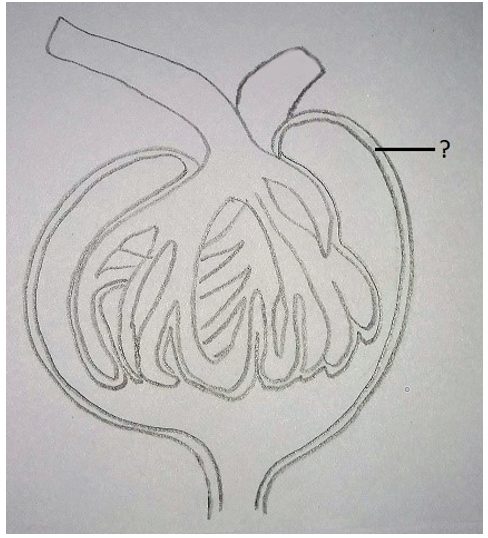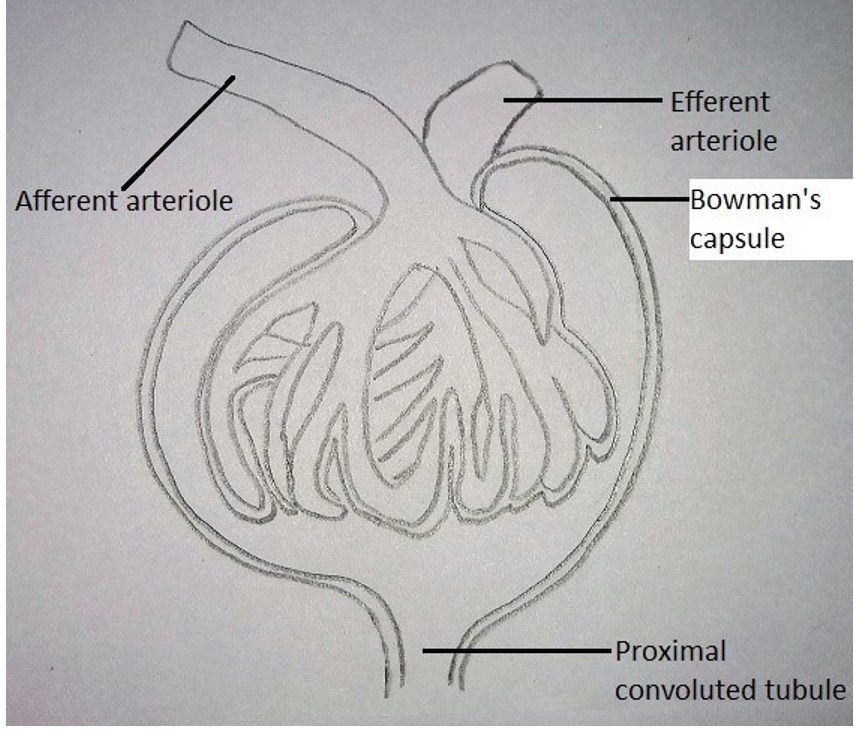This set of Class 11 Biology Chapter 19 Multiple Choice Questions & Answers (MCQs) focuses on “Human Excretory System – 2”.
1. Which of the following structure encloses glomerulus?
a) Bowman’s capsule
b) Medullary pyramids
c) Cortex
d) Renal capsule
View Answer
Explanation: The renal tubule, Bowman’s capsule encloses the glomerulus. Bowman’s capsule is a double-walled cup-like structure. Glomerulus along with Bowman’s capsule is called a Malpighian body. The inner wall of Bowman’s capsule consists of a special type of cells known as podocytes.
2. What is the full form of PCT?
a) Proximal Coronary Tube
b) Proximal Convoluted Tubule
c) Proximal Carotid Tube
d) Part Covering Thymus
View Answer
Explanation: PCT stands for Proximal Convoluted Tubule. The renal corpuscle continues further to form a highly coiled network of PCT. Brush bordered cuboidal epithelium is present in PCT.
3. Which of the following is succeeded by PCT?
a) Henle’s loop
b) Glomerulus
c) DCT
d) Collecting duct
View Answer
Explanation: The highly coiled proximal convoluted tubule leads to a hairpin shaped Henle’s loop which has a descending and an ascending limb. The ascending limb continues further to another tubule.
4. Where do the DCTs of nephrons open into?
a) PCT
b) Henle’s loop
c) Conducting duct
d) Glomerulus
View Answer
Explanation: The ascending limb of Henle’s loop continues as another highly coiled tubular region called distal convoluted tubule (DCT). The DCTs of many nephrons open into a straight tube called collecting duct, many of which converge and open into the renal pelvis through medullary pyramids in the calyces.
5. Which of the following is not situated in the cortical region of the kidney?
a) PCT
b) DCT
c) Malpighian corpuscle
d) Loop of Henle
View Answer
Explanation: The loop of Henle is not situated in the cortical regions of the kidney as it is that part of renal tubule which dips into the medulla. The Malpighian corpuscle, PCT, and DCT are some parts of the nephron which are situated in the cortical regions of the kidney.
6. In the majority of nephrons, the loop of Henle is too large.
a) True
b) False
View Answer
Explanation: In the majority of nephrons, the loop of Henle is too short and extends to a very little extent into the medulla. Such nephrons are called cortical nephrons.
7. Where do the juxtamedullary nephrons dip?
a) Medullary pyramids
b) Calyces
c) Deep in the medulla
d) Renal pelvis
View Answer
Explanation: In some of the nephrons in the kidney, the loop of Henle is very long and runs deep into the medulla. These nephrons dipping into the medullary region are known as juxtamedullary nephrons.
8. The peritubular capillaries emerge from which of the following?
a) Efferent arteriole
b) Afferent arteriole
c) Henle’s loop
d) Renal artery
View Answer
Explanation: The peritubular capillaries emerge from the efferent arteriole which initially emerges out of glomerulus. This arteriole forms a fine capillary network around the renal tubule which is known as peritubular capillaries. These capillaries further surround the loop of Henle.
9. Which of the following runs parallel to the Henle’s loop?
a) Renal artery
b) Renal vein
c) Vasa recta
d) Ureters
View Answer
Explanation: A minute vessel of peritubular capillaries run parallel to the Henle’s loop forming a U shaped vasa recta. Vasa recta are absent or highly reduced in cortical nephrons.
10. What does the question mark in the given figure represents?

a) Afferent arteriole
b) Efferent arteriole
c) Glomerulus
d) Bowman’s capsule
View Answer
Explanation: The question mark represents Bowman’s capsule. The complete labelling of the given figure as shown below:

The given diagram represents a Malpighian body or a renal corpuscle.
11. The kidney is retroperitoneal.
a) True
b) False
View Answer
Explanation: The kidney is retroperitoneal because it is attached to peritoneum on the ventral side. The dorsal surface of the kidney is attached to the dorsal abdominal wall, so only its ventral surface is covered by the peritoneum.
12. Which of the following prevents the backflow of urine?
a) Valves
b) Muscles
c) Urinary sphincter
d) Oblique opening of ureters
View Answer
Explanation: Both the ureters that emerge out of the kidneys, open through separate oblique openings into the urinary bladder. The oblique openings of these ureters prevent the backflow of urine.
13. Which of the following vessels carry blood with minimum urea?
a) Renal artery
b) Renal vein
c) Hepatic vein
d) Hepatic portal vein
View Answer
Explanation: Renal vein carries the blood with a minimum amount of urea while hepatic vein carries the blood having a maximum amount of urea.
14. The outer layer of Bowman’s capsule is made up of which of the following epithelium?
a) Squamous epithelium
b) Transitional epithelium
c) Cuboidal epithelium
d) Columnar epithelium
View Answer
Explanation: The outer layer of the Bowman’s capsule is lined by the squamous epithelium while the inner layer has podocytes with filtration slits. Transitional epithelium is present in ureters, renal pelvis, and urinary bladder.
15. Juxta-medullary nephrons constitute what percentage of the total nephrons?
a) 80%
b) 50%
c) 15-20%
d) 75-95%
View Answer
Explanation: Juxta-medullary nephrons constitute about 15-20% of the total nephrons. These nephrons have long Henle’s loop. Vasa recta are present. These nephrons work in stressful conditions.
Sanfoundry Global Education & Learning Series – Biology – Class 11.
To practice all chapters and topics of class 11 Biology, here is complete set of 1000+ Multiple Choice Questions and Answers.
If you find a mistake in question / option / answer, kindly take a screenshot and email to [email protected]
- Check Class 11 - Books
- Practice Class 12 - Biology MCQs
- Practice Class 11 - Mathematics MCQs
- Practice Class 11 - Physics MCQs
- Practice Class 11 - Chemistry MCQs
